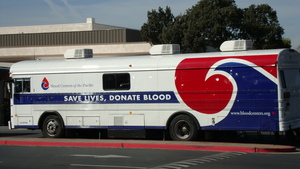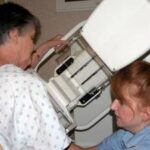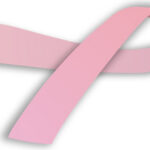Women are encouraged to do regular self-breast examinations to detect unusual findings in their breasts, such as lumps, difference in size of one breast compared to the other and discharge or drainage from the nipples. Nothing can be more horrifying than to learn you have an abnormal mammogram and when you are asked to return for a repeat mammogram.
Once a repeat mammogram is performed, and a definitive diagnosis cannot be determined, it is essential for further study. Now the responsibility rests with your primary physician to refer you to a radiologist for a needle biopsy or a surgeon for a surgical or opened biopsy.
On Feb. 18, The New York Times wrote about a study by Dr. Stephen R. Grobmyer, the director of the Breast Cancer Program at the University of Florida. The study revealed that 30 percent of breast biopsies performed from 2003 to 2008 was surgical when the rate should have been 10 percent or less.
The study concluded that women who had abnormal mammograms or other breast problems were undergoing surgical biopsies when they should have had needle biopsies, which are safer, less invasive, and cheaper, according to on new research. Dr. Grobmyer explained some surgeons continue to do surgical biopsies because needle biopsies are usually performed by a radiologist, and referring patients to a radiologist would mean surgeons losing the biopsy fee.
Here is more information on surgical breast biopsies:
What is a surgical breast biopsy?
This is performed by a physician who makes a cut or incision in the breast to remove all or part of a mass.
During the biopsy, patients will be awake or sleep dependent upon whether the biopsy is done under local or general anesthetic. The physician makes an incision over the mass to be biopsied using patient films from either a mammogram or ultrasound or by palpation for the exact location of the tissue to be biopsied.
The tissue, once excised, will be examined in a laboratory immediately to ensure adequate samplings were obtained for a definitive diagnosis. This procedure is usually done as outpatient, and for that reason, patients should be able to return home the same day provided there are no complications.
Indication for surgical biopsy: To obtain a clear diagnosis, and to remove the largest size of tissue sample when a needle biopsy result is inconclusive.
After surgical breast biopsy: May experience pain, or soreness. It is essential to keep the dressing dry until follow up appointment.
What is a needle biopsy?
This procedure may be referred to as ‘Fine Needle Aspiration Cytology,” (FNAC), “Fine Needle Aspiration Biopsy (FNAB).’ It is a diagnostic procedure for further study of a lump or mass where a needle is inserted into a mass to extract cells and examined under a microscope. The procedure is considered minor procedure because it does not involve excision or opening of the area. It is done in an outpatient setting while you are awake because the procedure is done under local anesthetic.
Indication for needle biopsy: To investigate lumps or masses.
Risk:
Cells obtained may be insufficient or missed that may result in a false negative and sometimes sampling of cells may not enable a definitive diagnosis. Needle biopsy is considered non invasive compared to an opened breast surgical biopsy. Complications reported mostly minor such as, bruising or soreness.
Tips:
Be sure to give your physician a list of all of your medicine (s) prior to any procedure.
Let the physician know if you have a heart condition where you are required to take an antibiotic prior to surgery.
Joyce Peacock is a registered nurse.





